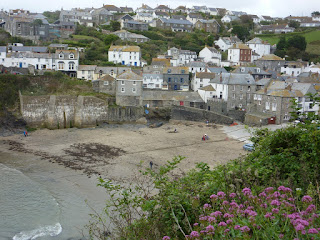This is Jonathon Coe at his best. Equally good as his "Number 11" and "Middle England". It is amazing how he tell this story in the first person of Calista, looking back to when she was twenty one, and her very short time working for the famous, but now ageing, film director. This is such a happy book, not filled with trademark Coe wit, but one where the prose flows in a glow.
Just over halfway through there is a story told at a dinner party that is in the form of a film script. Exquisite. There are a few mentions of Halliwell's Film Guide. I had to check out my copy for the notes there about Billy Wilder. I rarely read the "Acknowledgements and Sources" at the end of a book, but this time these felt quite emotional. I was sorry when I finished.
Anne Enright's Booker winning novel is a story about the Hegarty family. Little dramas told in flashback rather than a novel with forward momentum. But what sets this book apart ( and obviously the judges in 2007 thought the same) is the wonderful, intelligent, modern but highly accessible and almost musical prose. Told in the first person by Veronica Hegarty, (married, two children) but it seems more like a third person novel. "So here they all are, going to the races, finally. It is Easter Monday and every car in Dublin is making for Fairyhouse in a convoy, there are charabancs in line down O'Connell Street and trains going every twenty minutes from the station in Broadstone".
Veronica's brother Liam is dead. She has a funeral to organise. But the past comes back to her in waves. She was the closest sibling to Liam. There is more about her grandmother Ada than there is about her own mother. Because that is where her memories of Liam are most vivid and wild when they live there as children. And the visits of Lambert Nugent she cannot erase. But it is the prose that stands out, I haven't read anything like it for ages.









































































